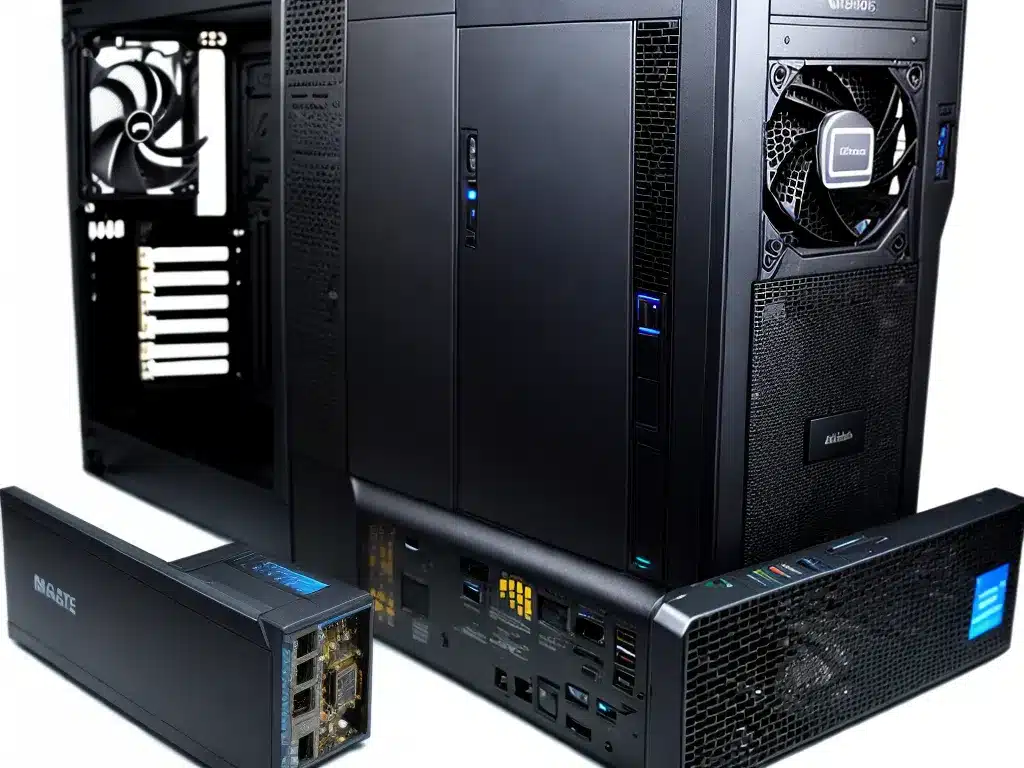
Introduction
I have an old PC that is starting to feel a bit sluggish and outdated. It was top of the line about 5 years ago, but technology moves so fast that it’s really showing its age. I don’t want to buy a brand new computer since this one still works fine for basic tasks. I decided to look into ways I could upgrade and revive it to extend its useful life. Here are some of the upgrade options I explored to breathe new life into my old hardware.
Upgrading the RAM
One of the easiest upgrades that can provide a noticeable speed boost is to add more RAM. My PC currently has 8GB which was plenty a few years ago. Now 16GB is more common for new systems.
RAM is needed for multitasking and allows the computer to access data quickly. The more RAM you have, the more applications and browser tabs you can have open without slowing things down.
I researched my motherboard manual and confirmed my PC supports up to 16GB of DDR3 RAM. I purchased a 8GB DDR3 RAM stick for around $40. Installing it took just a few minutes and allowed my PC to run faster. Upgrading the RAM provided an inexpensive yet impactful revival.
Replacing the Hard Disk with an SSD
Another upgrade option is to replace the traditional hard disk drive (HDD) with a solid state drive (SSD). HDDs have spinning magnetic discs that are slower and more prone to failure over time.
SSDs, on the other hand, store data on instantly-accessible flash memory chips with no moving parts. This allows for much faster boot times and data access.
I had a 500GB HDD that was getting full. I cloned it over to a 250GB SSD for around $80. The smaller capacity is fine for my usage. Installing the SSD and doing a clean Windows install immediately made the PC feel brand new. Apps open instantly and boot time went from over a minute to under 30 seconds.
For optimal performance, I also enabled the SSD optimization features like TRIM in Windows. An SSD upgrade is one of the best ways to dramatically speed up an old computer.
Updating the Graphics Card
The dedicated graphics card (GPU) has a big impact on gaming performance and visuals. My old Nvidia GTX 750 Ti was really showing its age when trying to play modern games.
I didn’t want to spend too much so I bought an Nvidia GTX 1650 GPU for around $170. It draws much less power and doesn’t need extra power connectors. Swapping out the GPU was easy after uninstalling old drivers.
The GTX 1650 allows me to play recent games at medium settings and 1080p resolution. Upgrading to a modern value-priced GPU can still offer solid gaming performance improvements. It really extended my old PC’s legs for gaming and graphics tasks.
Adding an Extra Monitor
Having a second monitor can make a big productivity difference since I can have more applications and windows open at once. My old GPU only had one HDMI port so I also got a $20 USB 3.0 to HDMI adapter.
After installing the drivers, I was able to hook up a spare 1080p monitor I had via the USB port. Adding the extra screen real estate helped improve my workflow efficiency. I can now have my browser on one screen and word processor on the other screen. It’s easier to multitask and get things done.
Cleaning Out Dust Buildup
After 5 years, my PC case and components were filled with dust which can cause overheating issues. I used compressed air to blow out dust from the CPU cooler, case fans, and other components.
I also removed the CPU cooler and reapplied fresh thermal paste which improves heat transfer from the CPU. Taking the time to clean out the dust resulted in lower CPU/GPU temperatures and less fan noise when gaming or under heavy loads. Keeping your computer clean is essential.
Conclusion
Reviving an aging computer can be very cost effective compared to buying a brand new one. With a few inexpensive upgrades like more RAM, an SSD, new GPU, and an extra monitor, I was able to breathe new life into my old PC. It feels much faster and more responsive now, especially when gaming or multitasking. Keeping the components clean of dust also helped improve thermals and extend its longevity. With proper upgrades and maintenance, you can keep an old computer going for years past its expected lifespan.












